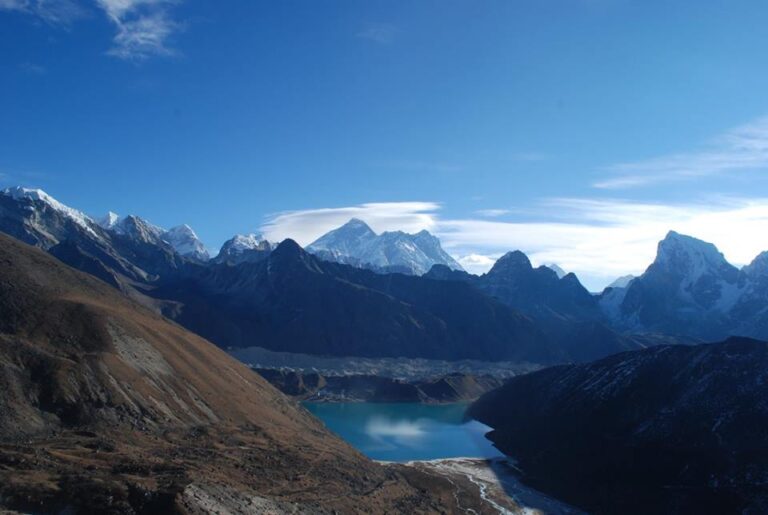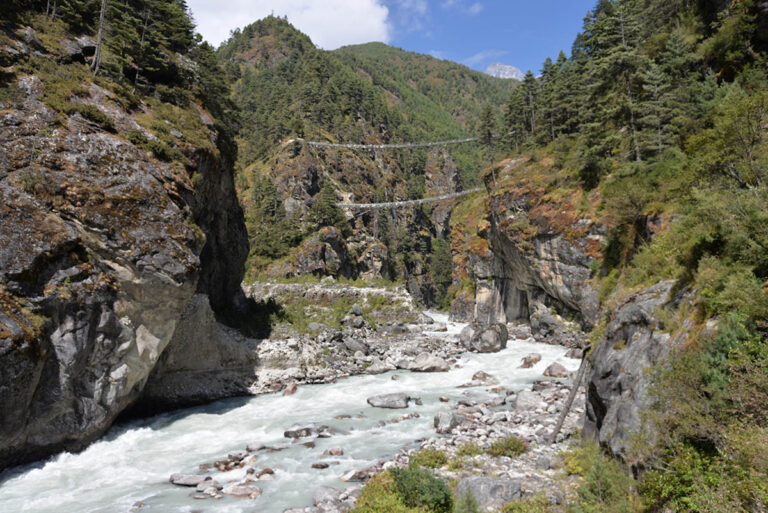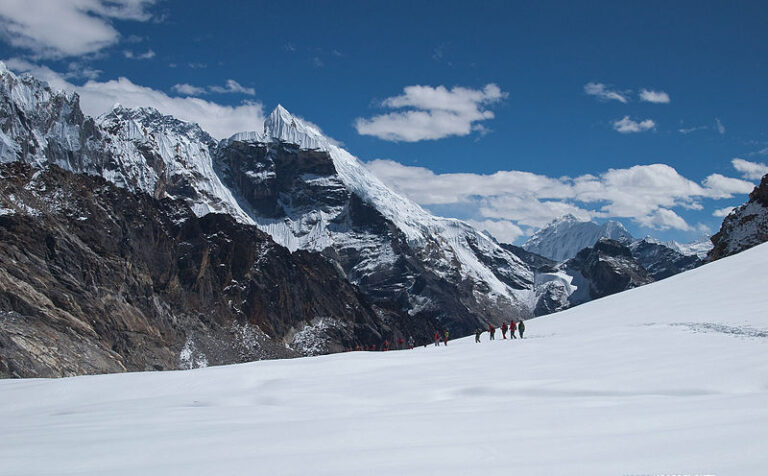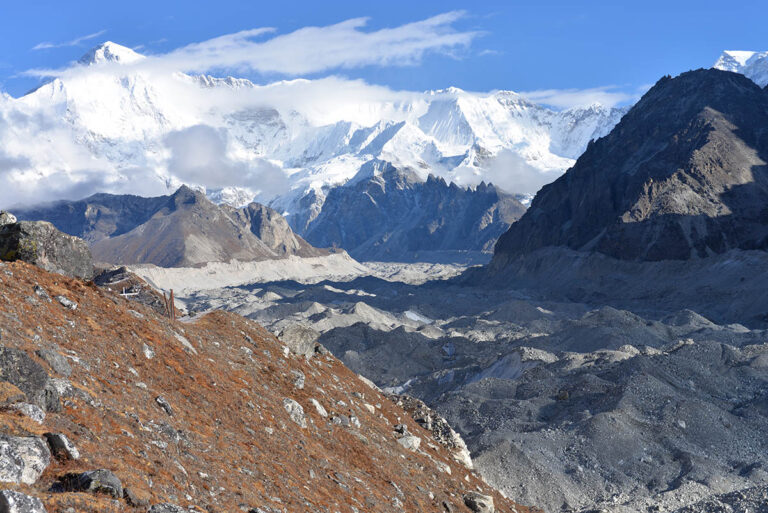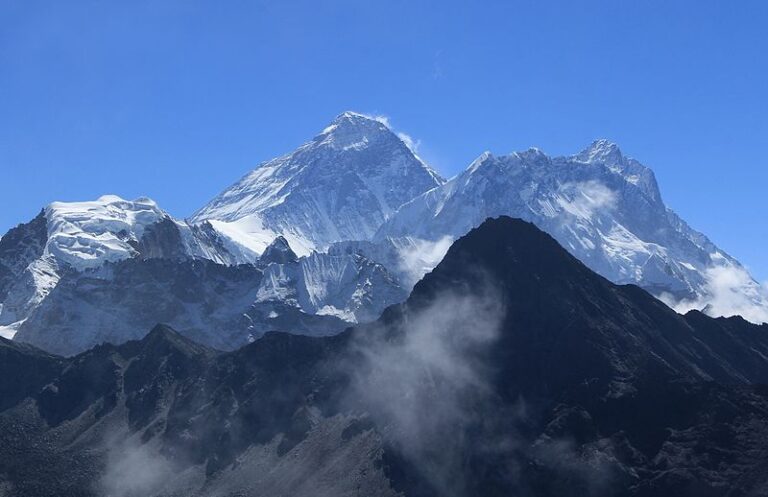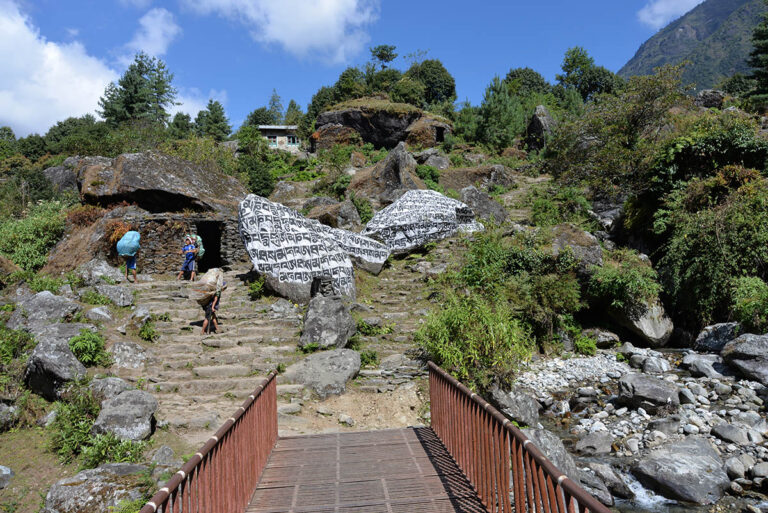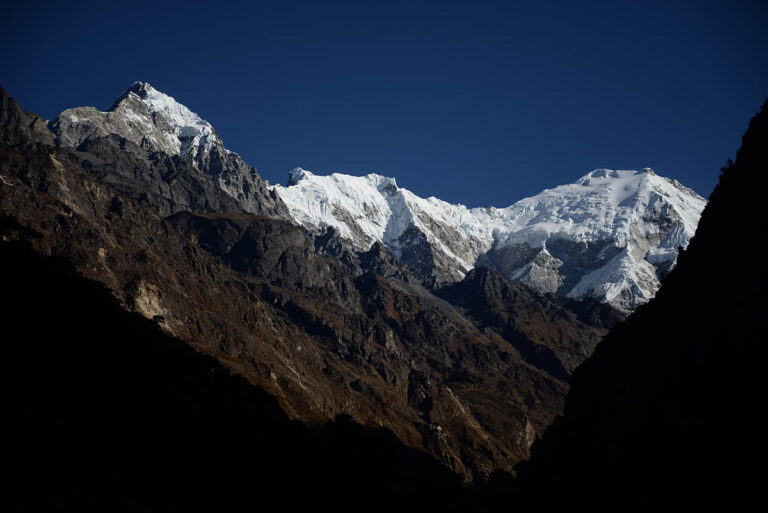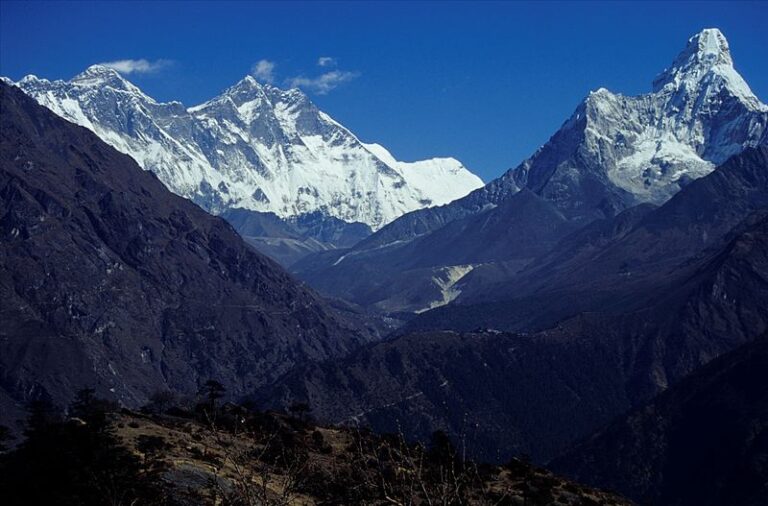Day 01 – Fly to Lukla and hike up to Phakding Village (2610m.a.s.l) – 4 hours walk – We will fly above the high mountains for 25 minutes then head towards Phakding village pass by several Sherpa village. En route we will have astonishing view of Kongde peak, Kusum kangaroo peak, deep gorge of Dudh Koshi River and hundreds of Chhortens, Stupa, monasteries and Buddhist mantras; which are carved onto huge rocks. Phakding village is divided into the two parts like lower and upper Phakding, the upper Phakding is much calm and quite than lower Phakding.
Day 02 – Trek to Namche Bazar (3440m.a.s.l0 – 6 hours walk – The trail leads us to Namche Bazaar just bank of the Dudh Koshi River pass by some villages called Tok-Tok, Benkar, Monjo and Jorsalle to get Larja Dobhan. The trail from Phakding to Larja Dobhan is leveled, passes through the lush forest of rhododendron and Pine and offers to see beautiful view of Thamserku peak, River valley and charms landscapes. From Larja Dobhan; the trail gently ascends through the forested trail to get Namche Bazaar that may takes about two hours and if the weather is clear then a hilltop commands to see first sight of Mount Everest.
Day 03 – Acclimatization day – Generally, most of the trekkers spent two nights in Namche Bazaar to do acclimatization. There are two popular sight trips in Namche Bazaar known as sight trip to Thame village and Everest viewpoint. Sight trip to Everest viewpoint is being popular due to see awesome river valley, green landscapes and stunning view of Kongde peak, Thamserku peak, Amadablam, Taboche, Cholatse, Nuptse, Lhotse and mount Everest. The Everest viewpoint is located just top of the Namche Bazaar and takes about two hours to get there.
Day 04 – Trek to Dole Village (4210m.a.s.l) – 6 hours walk – After two hours walk from Namche Bazaar we will reach in Sanasa Village; which is trail junction point to the Gokyo Valley and Everest Base Camp. From here, we will take left hand side trail to get Mong Danda; which is a beautiful hillock to see closer view of Taboche, Cholatse and Amadablam peak. From the Mong Danda the trail gently descends to the Phortse Tenga where we have to pick up our lunch because there is not any guesthouse between Phortse Tenga and Dole. After lunch, most of the time we will walk uphill trail to get dole but still we will have beautiful vista of Amadablam, Taboche and Cholatse peak.
Day 05 -Trek to Machhermo Village (4470m.a.s.l) – 4 hours walk – Begins of the trek, we will climb up an approximately one hour to get a top of the hill that purpose to see snow-capped peaks, rocky hills and delightful river valley. From here, the trail is mostly leveled and passes via gigantic pastureland where can be seen hundreds of grazing yaks, sheep and horses. There is six guesthouses in Machhermo and provides comfortable bedrooms and heated dining hall.
Day 06 -Trek to Gokyo Lake (4790m.a.s.l) – 4 hours walk – Trek from Machhermo to Gokyo Lake takes about four hours but still we might feel little bit difficult to breath due to high elevation. After 45 minutes walk from Machhermo will appear a beautiful glaciated lake called First Lake then the gradual up trail leads us to Gokyo Lake with astonishing view of Cholo peak, Ngojumba peak and as well as stunning view of Cho-Oyu which is one of the top ten mountains of the world. There are dozens of guesthouse beside the Gokyo Lake and provides comfortable bedrooms and delicious meals for the trekker. After lunch in Gokyo, we will climb up about 15 minutes to get top of the hill that offers to see beautiful mountain views, Gokyo Lake and gigantic glacier called Ngojumba.
Day 07 – Sight trip to Gokyo Ri view point (5360m.a.s.l) – 5 hours round trip – There are many sight trips around the Gokyo Valley known as Gokyo Ri, hike up to 5th Lake and day trip to Renjo La Pass but still sight trip to Gokyo Ri view point is being popular than others because Gokyo Ri viewpoint commands to see beautiful sunrise view on the back ground of Cho Oyu, Gokyo lake, Cholatse Peak, Cholo Peak, Ngozumpa Glacier and as well as the far view of Mount Everest and Makalu. The trail gently ascends nearby the Gokyo Lake and takes about three ours to get top of the Gokyo RI and two hours return back to Gokyo Lake.
Day 08 -Trek to Thangnak (4700m.a.s.l) – 3 hours walk – Thangnak is also spelled as Dranag by some maps but still it is the same place located eastern part of Gokyo lake and just bottom of huge rocky hill. The trail passes on the Ngojumba glacier, on a rocky path and landslide so we have pay attention to safe with falling rocks. Trek from Gokyo Lake to Thangnak takes about three hours so will be enough time to do rest and relax. There are five guesthouses are in Thangnak and possible to have delicious meal and comfortable bedrooms with warm hospitality.
Day 09 – Trek over the Cho La Pass 5368 meters and trek down to Jongla (4830m.a.s.l) – 7 to 8 hours walk – The trail ascends from the yard of the guest house of Thangnak and passes through the pastureland, rocky moraines and frozen icy trail to the Cho La Pass which may takes an approximately 4 hours to get atop of the Cho La Pass. Chola pass commands to see dramatic view of high Himalayas, snow-capped peaks, huge glaciers and deep River valleys. From the top, we will walk down an approximately three hours to get Jhongla village with magnificent view of Lobuche peak, Nirekha peak, Akramse peak, Cholatse peak, Amadablam and deep valley of Pheriche village.
Day 10 –Trek to Gorakshep (5140m.a.s.l) – 5 to 6 hours walk – The gradual up trail leads us to Lobuche village with astonishing view of Cholatse Lake, Pheriche village valley and dozens snow-capped mountains called Amadablam, Cholatse, Lobuche, Nuptse, Pumori, Ligritse and as well as close view of huge Khumbu glacier. Trek from Lobuche to Gorakshep is easy but still we may feel lack of oxygen due to high elevation. There are dozens of good guesthouses in Gorakshep to spend the joyful night
Day 11 – Sight trip to Everest base camp and Kalapathar – After breakfast, we will go Everest base camp that may takes about three hours for round trip. Everest base camp purpose to see closer view of Khumbu glacier, camping spot and panoramic view of high mountains including Mount Everest. In the afternoon we will climb up an approximately two hours to get Kalapathar viewpoint that offers to see astonishing view of Nuptse, Lhotse, Ligritse, Khumbutse, Lobuche, Amadablam, Thamserku, Pumori, Mount Everest and beautiful sunset view on the background of high Himalayas.
Day 12 – Trek to Dingboche (4410m.a.s.l) – 6 hours walk – There is not any alternative trail to get back from the Gorakshep so we will return back to Lobuche village via same trail and same mountain views. From Lobuche village we will turn to the left hand side to get a pass called Thukla pass where can be seen hundreds of cemetery tomb who loose their life during the expedition of Everest and other mountains. From Thukla pass we will walk down to Dingboche village pass by a small village called Thukla with astonishing view of Amadablam, Akramche, Cholatse and wide valley of Pheriche and Dingboche village. Dingboche is neighbor village of Pheriche that offers to see better mountain views than Pheriche village.
Day 13 – Trek to Tengboche (3860m.a.s.l) – 5 hours walk – Today we will walk down to Tengboche Village pass by many villages called Somare, Pangboche, Dibuche and Milingo which are settlement of Sherpa people and offer us to see hundreds of Chhortens, Stupa, Mani walls, Rhododendron forest and very old monasteries called Pangboche and Tengboche monastery. Tengboche village is located just atop of the hill and commands to explore 600 years old monastery and purpose to see stunning view of Nuptse, Amadablam and its beautiful ranges.
Day 14 – Trek to Namche Bazar (3440m.a.s.l) – 6 hours walk – The trail gently descend from the yard of the guest house to the Fungitanga which may takes an about two hours and the trail ascends to the Kyanjuma village through the dense forest of Rhododendron and pine. We will have our lunch in Kyanjuma Village then continuously two hours trek to get Namche Bazaar.
Day 15 – Trek to Phakding village (2610m.a.s.l) – 5 hours walk – We will walk downhill trail through the pine and Rhododendron forest to get Larja Dobhan then rest of the trek to Phakding is very pleasant due to walk on the flat trail and fascinating view of River valley, green forest, waterfalls and stunning view of Thamserku peak. We will be in Phakding village later in the afternoon so possible to explore the tiny village to see local people activities and their daily life.
Day 16 – Trek to Lukla Bazaar (2840m.a.s.l) – 5 hours walk – we will pass many Sherpa villages called Ghat, Thadokoshi, Chheplung and Chaurikharka to get Lukla Bazaar. Along the trail; we will see numerous of Stupa, Chhortens, Monasteries and Buddhist Mantra; which are written on a huge rock and some of the snow-capped peaks known as Kusum Kangaroo and the Kongde peak.
Day 17 – Fly back to Kathmandu – Early in the morning we will fly about 30 minutes over the mountain, viewing an awesome green landscape, agricultural terraced fields, huge rocky hills and enormous rhododendron forest. After arriving of airport, we will escort to hotel and celebration of trek success.
